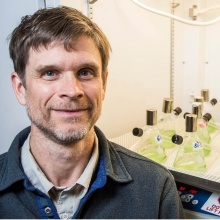Plasticity lost and found: cyanobacterial adaptation to novel environments

Scott Miller
University of Montana.
Scott.Miller@mso.umt.edu
Many organisms have the ability to acclimate to changing conditions by expressing different phenotypes in different environments (i.e., phenotypic plasticity). However, evolutionary biologists continue to debate the importance of plasticity for adaptation. I will present recent work in support of a role for the evolution of plasticity during cyanobacterial adaptation to novel environments. In one case, the loss and refinement of ancestrally plastic developmental variation has contributed to the increased thermotolerance of the nitrogen-fixing cell of the multicellular thermophile Fischerella thermalis. By contrast, the evolution of increased photosynthetic plasticity via horizontal transfer and gene duplication has accompanied the colonization of a novel animal host by the cyanobacterium Acaryochloris. Both examples illustrate how the evolution of plasticity can be a mechanism of cellular innovation and biological diversification.


